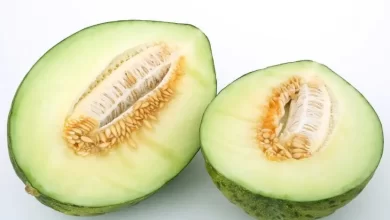Sow Alfalfa: [Substrate, Irrigation, Images + Step by Step]
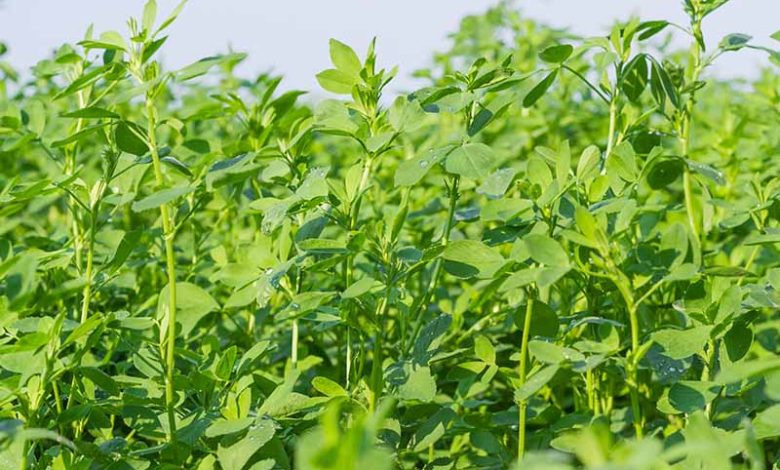
Alfalfa is a leguminous plant, like peas, broad beans, lentils and beans from Asia, widespread in countries with temperate climates.
One of its main characteristics is that it grows quickly and is quite easy to grow.
It also reduces soil erosion, and reduces the presence of pests and diseases of the crops that follow in rotation.
Take advantage of the great benefits that this legume brings you, both to your garden and to your body, and start planting alfalfa immediately.
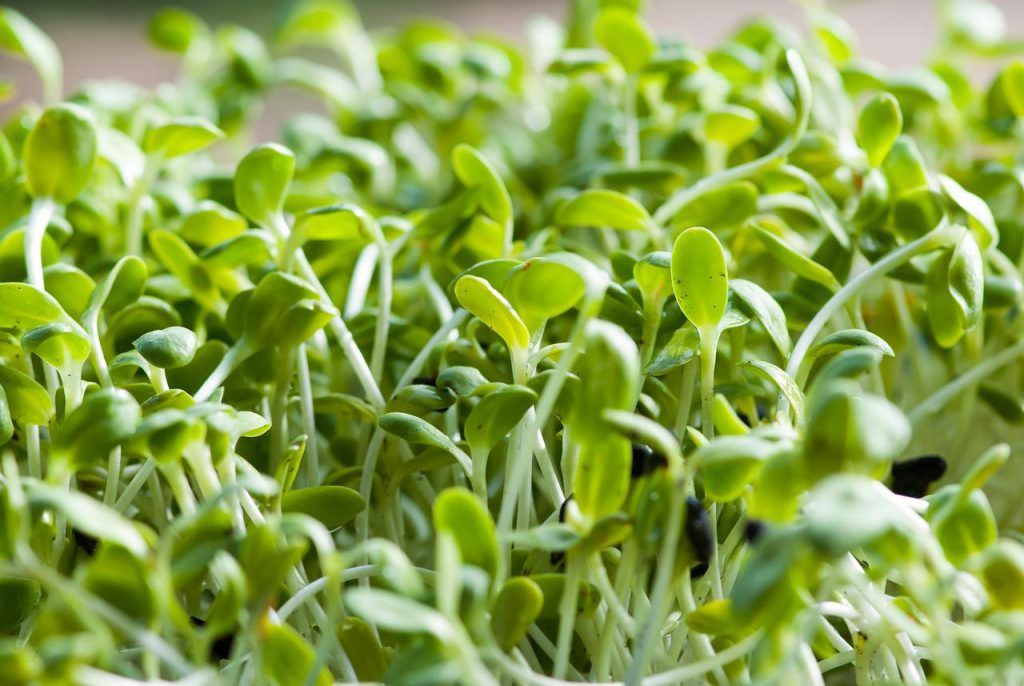
The keys to success:
- When? It usually sows from autumn in temperate climates. In very cold climates in spring.

- Where? It does not withstand extreme heat well. It requires a lot of sunlight (6-8h daily).
- Harvest time? 3 months after sowing.
- How do we water? Does not tolerate waterlogging. Yes, it is able to withstand droughts. We can water 1-2 times a week. Ideal drip.
- How do we prepare the land? It requires very deep and well drained soils. It is also convenient to cleanthe soil of weeds and weeds.
- How to sow? Here step by step.
- How do we harvest? The time of harvest is when the alfalfa presents green and leafy leaves, with flexible and thin stems.
- Favorable associations? Oatmeal, corn, beans and pumpkin.
- Plagues and diseases? Aphids, gray worm, alfalfa fly, mildew, powdery mildew, weevils, thrips and nematodes.
What do we need to plant alfalfa?
When should it be sown?
In very cold areas, it can be sown in spring, after frost, while in areas with less extreme weather it can be planted from autumn.
Where? the ideal place
requires to beplanted in areas of direct lightbecause their growth depends on it. The optimal development temperature ranges between 18 and 28º C.
Alfalfa seed can germinate at temperatures of 2 ºC, although the increase in temperature accelerates germination.
Temperatures above 35º C are detrimental to the plant.
Although there are varieties of alfalfa capable of tolerating temperatures of -10º C, most crops stop growing until spring.
How often should it be watered?
 Thanks to its root system, alfalfa is able to moderately withstand droughts.
Thanks to its root system, alfalfa is able to moderately withstand droughts.
However, its water need depends a lot on the climatic conditions where it is planted.
In general terms, it demands little water during the spring and in summer its water requirements are higher.
It does not tolerate stagnant water, as the roots rot easily, so we must ensure that we have well-drained soil.
In this sense, the amount of water depends on the retention capacity of the soil.
It is recommended to keep the surface layers of the earth always moist, avoiding waterlogging. Likewise, a drip irrigation system is convenient.
How do we prepare the land?
 Although it adapts to a wide variety of substrates, alfalfa requires very deep and well-drained soils.
Although it adapts to a wide variety of substrates, alfalfa requires very deep and well-drained soils.
Soils less than one meter deep are not recommended for planting alfalfa.
The optimal pH of the crop is 7.2 and liming should be done if the pH drops to 6.8.
This also helps reduce aluminum and manganese in the soil, which are very detrimental to alfalfa.
The development of alfalfa is limited by acidity, although during germination it resists pH up to 4.0 very well.
Likewise, alfalfa is very sensitive to salinity, which produces imbalances between the root and the aerial part.
favorable associations
Alfalfa can be planted in association with oats, corn, beans and squash.
How to plant alfalfa step by step
Step 1: Clear the ground

It removes weeds and remains of previous crops and all kinds of residues to ensure that the alfalfa receives the correct amount of nutrients.
All plants must be pulled out by the roots to prevent them from growing back.
Step 2: Prepare the ground
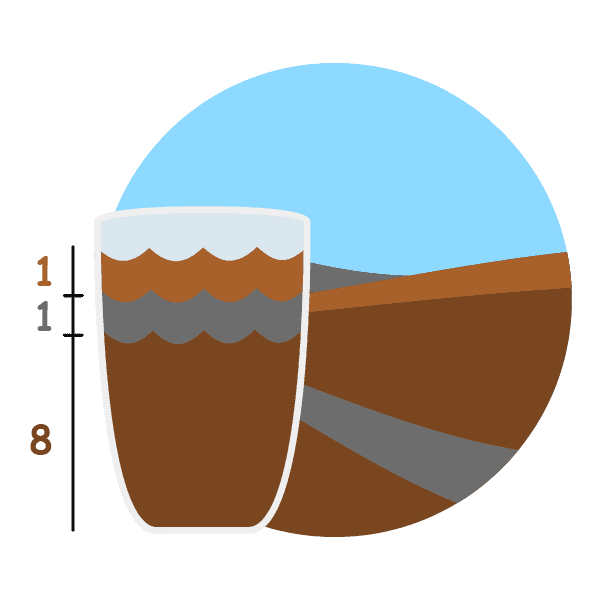
Moisten the soil before planting. This will prevent the seed from shifting easily.
You will most likely need to plow the subsoil to remove the top layers without turning or mixing them.
This will improve drainage conditions and increase the water storage capacity of the soil.
The subsoil is very important in the cultivation of alfalfa, because its roots are very deep.
Next, make 2 or 3 harrowings to level the ground and reduce the risk of waterlogging.
Step 3: Fertilize the soil
Broadcast a limestone amendment to promote calcium enrichment in the soil.
Preferably, check the levels of manganese and aluminum and try to reduce them as much as possible.
Check phosphorous and potassium levels. Apply a fertilizer with high content of these minerals to nourish the soil.
Step 4: Put the seeds in the soil
The depth depends on the type of soil. In heavy soils, the depth is 1.25 cm, while in light or sandy soils, the depth can be up to 3 cm.
The sowing method is broadcast, which means that the seeds are spread throughout the land on a regular basis.
Step 5: Create furrows on the ground, leaving half a meter between each row
Then spread the seeds evenly over the soil and lightly cover them with soil.
Step 6 Moisten the soil
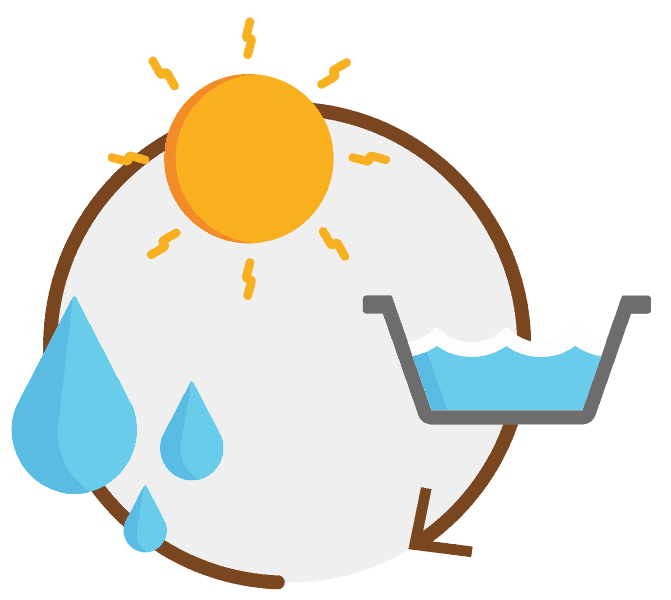 Prune your plants regularly.
Prune your plants regularly.
The seeds will germinate in 7 days.
The first harvest may be carried out 70 days after planting. From then on, cuts can be made every 30 days, although the frequency of cuts varies according to the harvest.
To take advantage of the maximum yield, it is suggested to make the cuts every 28 days in spring and summer; every 30 during the fall and every 45 days in winter.
Keep in mind that very frequent cuts quickly exhaust the alfalfa, causing a reduction in its yield and density.[/su_note]
How to harvest alfalfa
 Harvest time is when the alfalfa presents leafy green leaves, with flexible and thin stems . It also gives off a fresh and pleasant aroma.
Harvest time is when the alfalfa presents leafy green leaves, with flexible and thin stems . It also gives off a fresh and pleasant aroma.
The ideal moment for cutting is when the plant has the most flowers, in this way we ensure a healthy subsequent outbreak.
Alfalfa should not be cut in times of rain, as it can damage the crop and even lead to mold problems.
Maximum production is obtained with lower heights of cut and mowing at long intervals.
Common pests and diseases
aphids
 To combat them, potassium soap can be applied to the underside of the plants.
To combat them, potassium soap can be applied to the underside of the plants.
If the plague persists or is very abundant, we will also apply neem extract.
gray worm
The larvae produce galleries in the leaves, damaging the plant.
For its control, the most effective ecological treatment is bacillus thuringiensis.
alfalfa fly
The larvae attack the flowers forming pink galls, eventually drying the flower.
To prevent them, it is recommended to spray the underside of the leaves with 1% potassium soap with rain or distilled water.
weevils
They are brown beetle larvae that appear in spring and hide in cracks in the ground. They devour leaves and seeds.
The larvae also feed on the small roots of newly germinated plants.
To control them, crop rotation is recommended. Preferably, cultivate the previous year with winter cereals or peas.
thrips
 To combat them, a combined application of neem extract and potassium soap is recommended.
To combat them, a combined application of neem extract and potassium soap is recommended.
To learn more, read this article about thrips.
nematodes
To control them, we can plant garlic cloves as a repellent.
They can also be treated with steam sterilization and solarization.
verticillium wilt
It is a fungus that lives in the soil and can remain dormant for four to nine years.
For its control, it is recommended to alternate alfalfa with resistant grasses and strict weed control.
rust and mildew
To combat it, it is recommended to eliminate weeds and crop debris.
Likewise, excess humidity should be avoided, ventilating the crop.
Horsetail extract or dusted sulfur can also be applied.
powdery mildew
It is best to install a drip irrigation system and apply horsetail as prevention.
It also works to eliminate weeds and crop debris, as well as promote ventilation of the crop.

![Photo of Kaki Irrigation: [Needs, Frequency and Procedure]](https://www.complete-gardening.com/wp-content/uploads/2021/06/kaki_arbol_1623360784-390x220.jpg)
![Photo of Laurel Cuttings: [Grafts, Time, Rooting and Planting]](https://www.complete-gardening.com/wp-content/uploads/2022/08/laurel-cuttings-grafts-time-rooting-and-planting-390x220.jpg)

